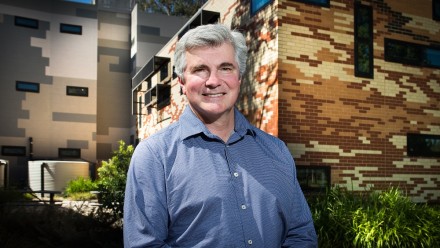Energy policy needs to get on board the renewable energy train
Analysis by the Australian National University shows Australia could have 100 per cent renewable electricity by the early 2030s if the current rate of installations by industry continues into 2020 and beyond.
Experts from ANU analysed Australian Government renewable energy project data that showed during 2018 and 2019 Australia will install about 10,400 megawatts of new renewable energy.
Energy Change Institute Director Professor Ken Baldwin said if the current rate of renewable energy installations continues, Australia will eclipse the Renewable Energy Target, with 29 per cent renewable electricity in 2020, and 50 per cent in 2025.
“We estimate electricity emissions would thereby be reduced by 26 per cent in 2021, and the electricity sector on its own would meet Australia’s entire Paris emissions reductions target of 26 per cent by 2025,” said Professor Baldwin.
“Australian industry is proving it’s not difficult or expensive to make deep and rapid cuts to greenhouse gas emissions.”
“All the evidence points to Australia’s capacity to be a renewable energy superpower, with all the economic and environmental benefits that come with that. We need Australia’s governments to put in place the right plans for the renewable energy train to have a smooth ride,” said Professor Baldwin.
Professor Andrew Blakers from ANU Research School of Engineering said the new capacity coming is divided approximately equally between large-scale solar photovoltaics (PV), wind farms, and rooftop solar PV.
“Combined, the 10,400 megawatts of new capacity to be installed in 2018 and 2019 represents about 30 per cent of Australia’s peak electricity demand,” Professor Blakers said.
“The Australian renewable energy industry is unequivocally demonstrating that it has the technical capability to deliver vast quantities of cheap, reliable, secure and zero-emissions energy,” Professor Blakers said.
“Australia is installing wind and solar PV at a faster per capita rate than nearly every other country.”
Dr Matthew Stocks from ANU Research School of Engineering said the rapidly growing supply of renewable energy into the electricity network requires effective planning to ensure enough storage and transmission capacity is built to deliver reliable energy to homes and businesses.
“The remaining piece of the puzzle is more storage and stronger interstate interconnection, which is where governments should be focussing their attention,” said Dr Stocks.
“Pumped hydro storage – such as the proposed Snowy 2.0 – is off-the-shelf technology, while batteries are rapidly falling in price.”
“Our message is that the renewables train has developed great momentum, so policy makers need to get on board,” said Dr Stocks.
The ANU analysis was based on publicly available data from the Clean Energy Regulator, and is available on the ECI publications website.
FOR INTERVIEW:
Professor Ken Baldwin
Director, Energy Change Institute
Australian National University
T: + 61 2 6125 4702, M: +61 (0)432 987 251
E: Kenneth.Baldwin@anu.edu.au
Professor Andrew Blakers, Research School of Engineering, Australian National University
T: 02 6125 5905 M: 0417 390 139
E: Andrew.Blakers@anu.edu.au
Dr Matthew Stocks Research, Research School of Engineering, Australian National University
T: 02 6125 9876, M: 0419 370 012
E: Matthew.Stocks@anu.edu.au
For media assistance, contact Jo Meehan +61 436 605 635 or the ANU Media Team on +61 2 6125 7979 or at <media@anu.edu.au>.











